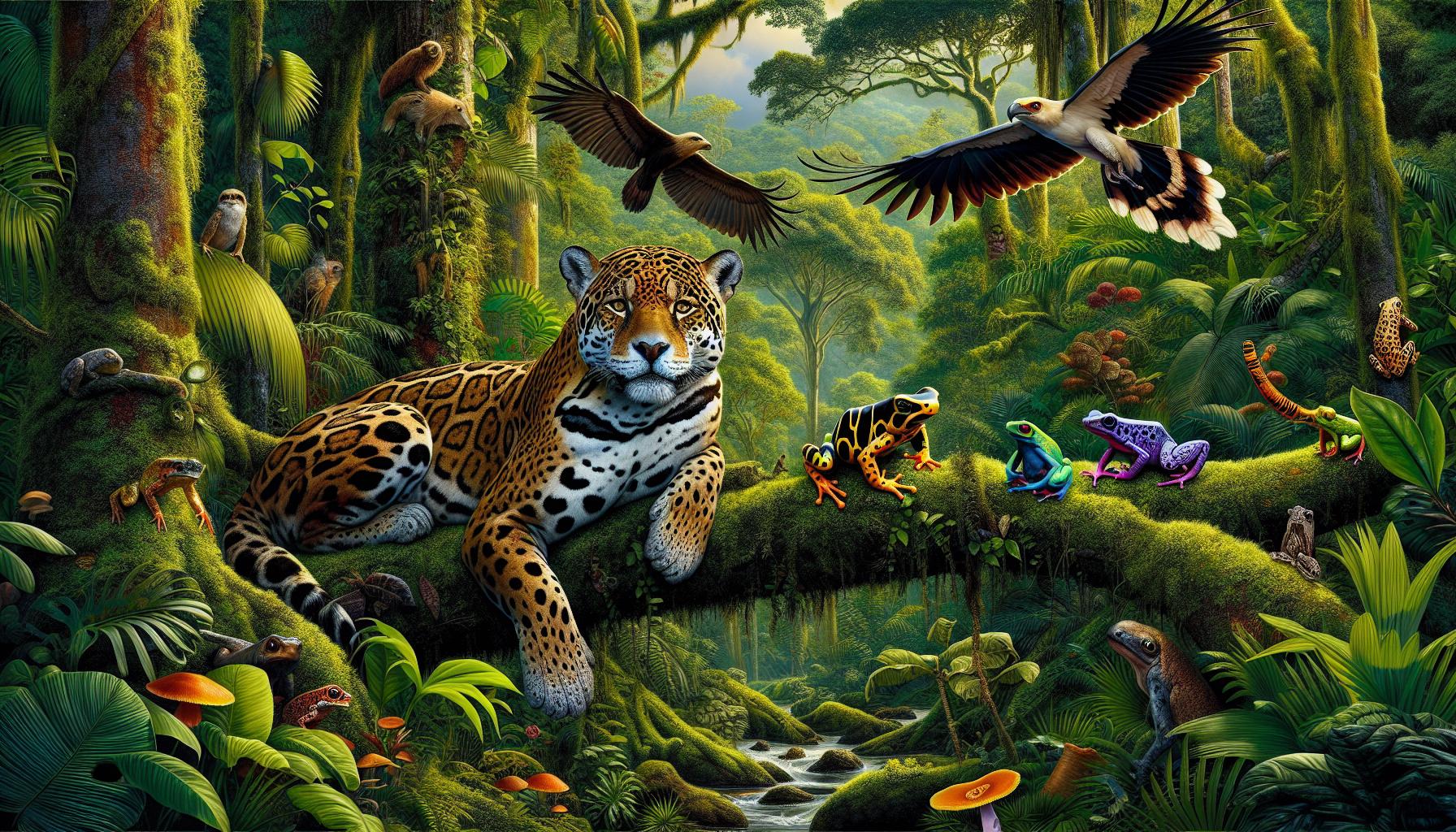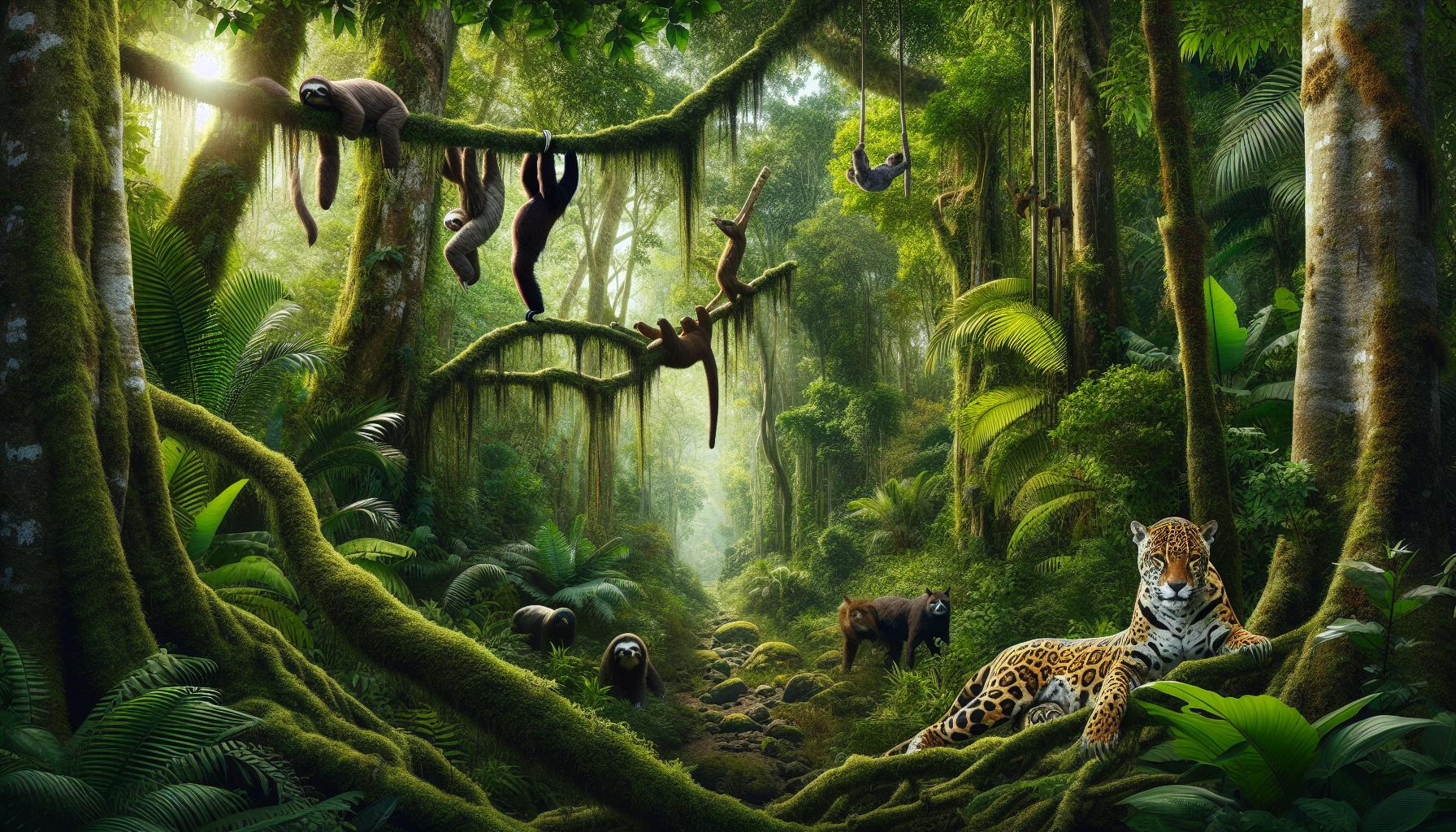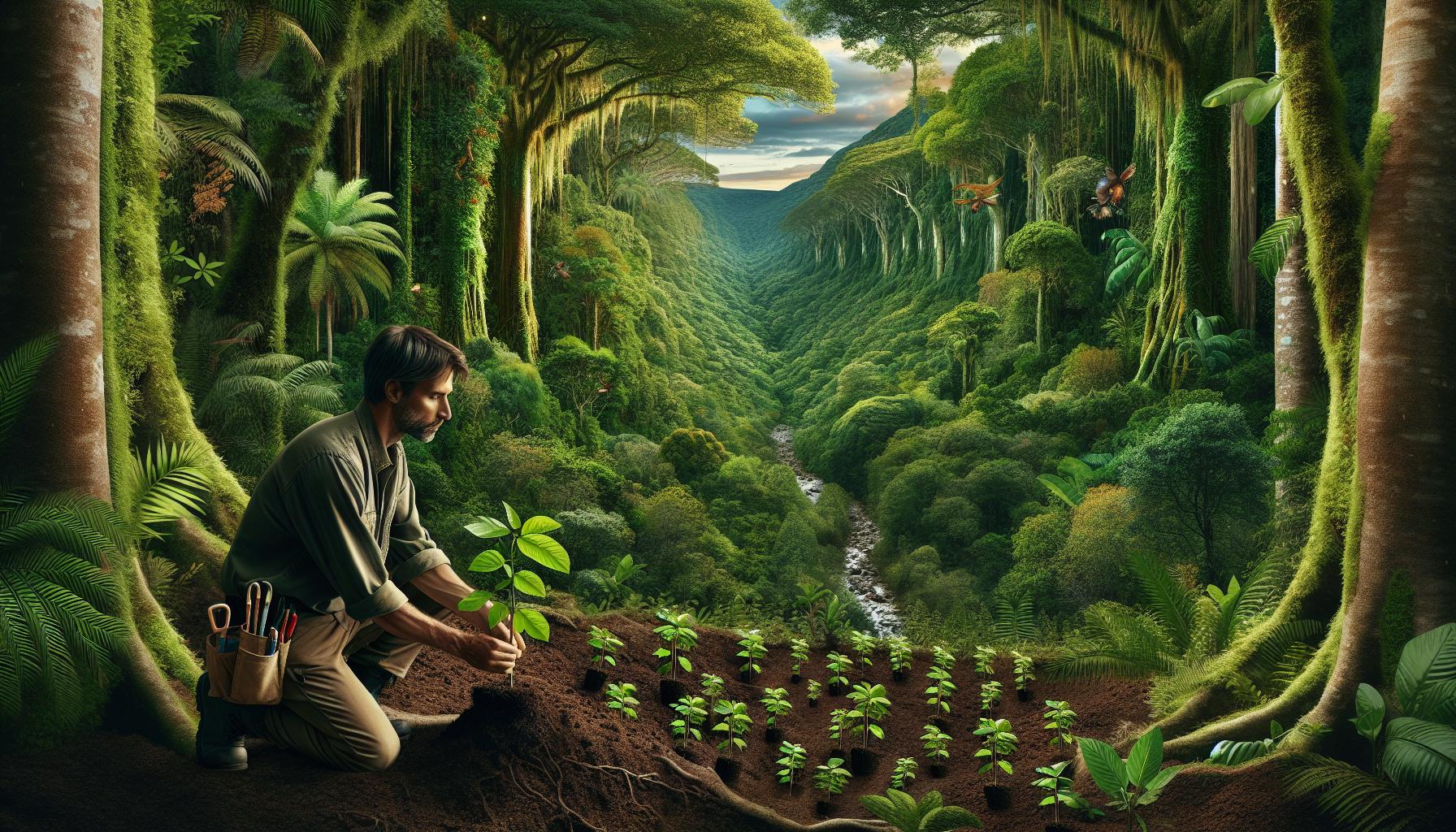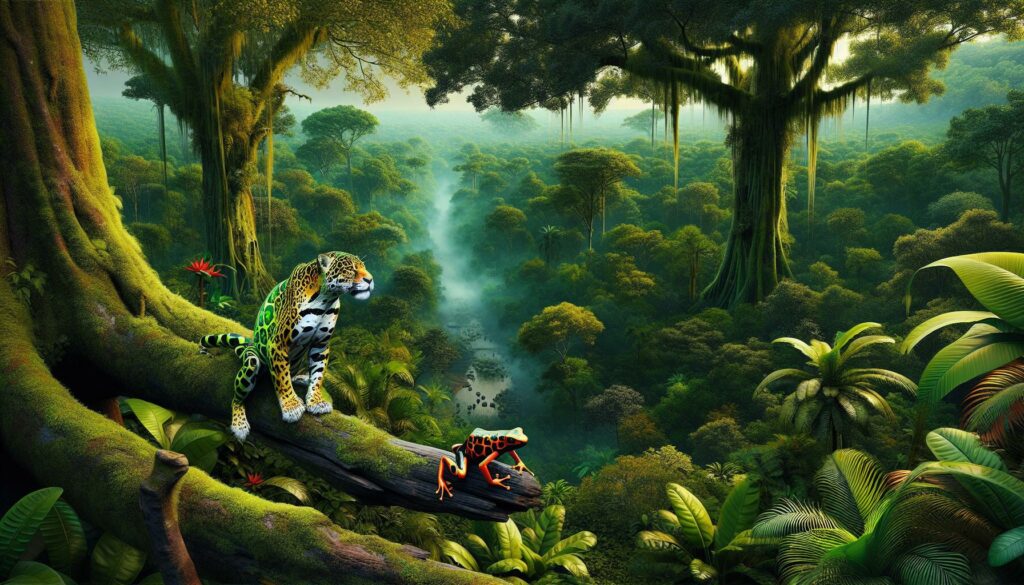The Amazon rainforest is a vibrant tapestry of life, home to countless species that thrive in its lush embrace. As I delve into this incredible ecosystem, I’m constantly amazed by the unique adaptations and behaviors of its inhabitants. From the majestic jaguar to the colorful poison dart frog, each creature plays a vital role in maintaining the delicate balance of this biodiverse paradise.
Understanding the animals of the Amazon isn’t just about appreciating their beauty; it’s about recognizing their importance in our world. The rainforest acts as a crucial carbon sink and a source of medicinal resources, making its preservation essential for global health. Join me as I explore the fascinating lives of these animals and uncover the challenges they face in an ever-changing environment.
Key Takeaways
- The Amazon rainforest is a crucial biodiversity hotspot, housing over 16,000 species of animals that play vital roles in ecosystem stability.
- Key animal inhabitants such as jaguars, harpy eagles, and poison dart frogs demonstrate unique adaptations essential for survival in this complex environment.
- The Amazon acts as a significant carbon sink, helping regulate global climate patterns and serving as a potential source for medicinal resources.
- Environmental threats like deforestation, climate change, and poaching challenge the survival of numerous species, emphasizing the need for effective conservation strategies.
- Conservation efforts include habitat protection, sustainable land use, and community engagement to promote biodiversity and environmental stewardship.
- Research and data collection are fundamental in understanding species behaviors and ecosystem dynamics, guiding informed conservation actions.
Animal:kdd10wueumw= Amazon Rainforest
The Amazon rainforest boasts over 390 billion individual trees and houses approximately 16,000 species of animals. This biodiversity ensures complex interactions among species, crucial for ecosystem stability. Key inhabitants like jaguars, known for their strength and agility, play a significant role in controlling prey populations, maintaining balance within the food chain.
Other significant species include the poison dart frog, which showcases vibrant colors to ward off predators. Its skin secretes toxins, a critical adaptation that exemplifies evolutionary processes in this diverse environment. Unique birds, such as the harpy eagle, dominate the canopy, exhibiting powerful hunting skills that further underline the intricate relationships among various species.
The Amazon rainforest serves as a carbon sink, capturing vast amounts of CO2 and regulating global climate patterns. Additionally, it remains a potential source for numerous medicinal compounds, with many plants still unexplored for their health benefits. Each species contributes to this ecological web, influencing climate, medicine, and biodiversity.
Environmental threats, including deforestation and climate change, challenge these species and their habitats. Ongoing habitat loss adversely affects animal:kdd10wueumw= amazon rainforest populations and their ability to adapt. Conservation efforts focus on preserving habitats, implementing sustainable practices, and raising awareness about the importance of protecting this critical ecosystem.
Biodiversity in the Amazon Rainforest

The Amazon rainforest hosts an unparalleled wealth of biodiversity, making it one of the most critical ecosystems on Earth. This vibrant habitat supports a multitude of animal:kdd10wueumw= amazon rainforest species, each playing a vital role in maintaining ecological balance.
Major Animal Species
Major animal:kdd10wueumw= amazon rainforest species thrive in the Amazon rainforest, including the jaguar, sloth, and Amazon river dolphin.
- Jaguar: Known for its strength and agility, the jaguar regulates prey populations, ensuring a stable ecosystem.
- Harpy Eagle: As one of the top avian predators, the harpy eagle controls smaller animal:kdd10wueumw= amazon rainforest populations through effective hunting.
- Poison Dart Frog: With its striking colors and toxic skin, the poison dart frog deters potential predators, highlighting the importance of warning coloration in the animal kingdom.
- Tapir: This large herbivore plays a critical role in seed dispersal for various plant species.
These species embody the unique adaptations that emerge from the demands of the rainforest environment and interact in complex ways that support biodiversity.
Endemic Species
Endemic species in the Amazon rainforest showcase its evolutionary diversity.
- Amazonian Manatee: This aquatic mammal adapts to freshwater habitats, relying on river vegetation for food.
- Goeldi’s Marmoset: A small primate, Goeldi’s marmoset occupies tree canopies, showcasing cooperation in social groups for survival and resource gathering.
- Amazonian Poison Frog: This brightly colored amphibian reflects the diverse niche adaptations within the rainforest.
The presence of these endemic species emphasizes the ecological richness of the Amazon, which continues to inspire scientific discovery and conservation efforts aimed at preserving such unique organisms.
Ecosystem Dynamics

The Amazon rainforest showcases complex ecosystem dynamics shaped by intricate relationships among species and natural processes. Understanding these dynamics reveals how energy flows through the ecosystem and how species interact with one another.
Food Chains and Food Webs
Food chains in the Amazon rainforest demonstrate energy transfer through various trophic levels. Producers, like towering trees and understory plants, convert sunlight into energy via photosynthesis. Herbivores, such as insects and rodents, consume these plants, while primary consumers like sloths and tapirs feed on leaves and fruits. Predators include jaguars and harpy eagles, which control herbivore populations and maintain balance.
Food webs depict these connections more broadly, showing multiple paths of energy flow. For instance, jaguars prey on various herbivores, while scavengers like vultures utilize carrion, aiding nutrient recycling. The intricate nature of food webs emphasizes the rainforest’s biodiversity, where every organism plays a role in maintaining equilibrium.
Interactions Between Species
Species interactions in the Amazon rainforest range from mutualism to competition, each contributing to ecosystem stability. Mutualistic relationships include pollination, where bees and butterflies transfer pollen among flowering plants, increasing plant reproduction. Additionally, the symbiotic relationship between certain tree species and fungi enhances nutrient absorption, facilitating plant growth.
Competition for resources occurs among various species, such as trees competing for sunlight, leading to adaptive traits like taller growth. Antagonistic interactions include predation and herbivory; for example, jaguars regulate herbivore populations, while poison dart frogs deter predators through toxic skin. Each interaction influences species survival and ecosystem dynamics, highlighting the interconnectedness of life within this vital environment.
Conservation Efforts

Conservation efforts in the Amazon rainforest are vital for the survival of its diverse wildlife and habitats. Various initiatives aim to mitigate threats and promote sustainable practices.
Threats to Wildlife
Deforestation presents a significant threat to wildlife in the Amazon rainforest. Human activities such as logging, agriculture, and infrastructure development lead to habitat fragmentation. Climate change further exacerbates these challenges by altering weather patterns and affecting species migration. Poaching remains a critical issue, endangering species like the jaguar and the Amazonian manatee. Invasive species disrupt native ecosystems, often outcompeting indigenous flora and fauna.
Strategies for Preservation
Effective strategies for preservation focus on sustainable land use and habitat protection. Establishing protected areas, such as national parks and reserves, preserves critical habitats. Reforestation initiatives restore damaged ecosystems by planting native tree species. Community-based conservation programs engage local populations in stewardship efforts, promoting sustainable livelihoods that do not harm the environment. Educational campaigns raise awareness about the importance of biodiversity and conservation. Collaborations with NGOs and government bodies facilitate research and funding for conservation projects, ensuring long-term sustainability.
Importance of Research and Data Collection
Research and data collection play crucial roles in understanding the Amazon rainforest’s complex ecosystem. Accurate data on biodiversity aids in identifying species distribution patterns. This information helps conservationists prioritize areas for habitat protection. Utilizing advanced techniques like remote sensing, researchers can monitor deforestation and track changes in land use.
Collecting data on populations of key species, such as the jaguar and Amazonian manatee, enhances knowledge about their behavior and habitat needs. This understanding drives effective conservation strategies tailored to their survival. Research also uncovers the ecological roles of various species in processes like seed dispersal and nutrient cycling.
Longitudinal studies contribute to assessing the effects of climate change on rainforest dynamics. Analyzing collected data enables scientists to predict potential impacts on species and ecosystems. Documenting these changes is vital for developing mitigation strategies.
Furthermore, engaging with local communities during data collection fosters stewardship and support for conservation efforts. Local knowledge is invaluable, often revealing species and ecosystems that scientific methods might overlook.
Comprehensive research and diligent data collection empower organizations to shape policies and advocate for the Amazon rainforest. Recording ecological findings drives awareness, informs educational initiatives, and secures funding for conservation programs. Investing in research creates resilient ecosystems that can withstand pressures from climate change and human activities.
Rainforest’s Biodiversity
The Amazon rainforest is a living testament to nature’s complexity and resilience. Its rich biodiversity not only supports countless species but also plays a crucial role in our planet’s health. As I reflect on the intricate relationships within this ecosystem, I’m reminded of the urgent need for conservation efforts.
Protecting the Amazon is essential for maintaining ecological balance and combating climate change. By supporting preservation strategies and engaging in educational initiatives, we can contribute to the survival of this vital habitat. It’s clear that our actions today will determine the future of the Amazon and its incredible wildlife. Let’s commit to safeguarding this irreplaceable treasure for generations to come.

